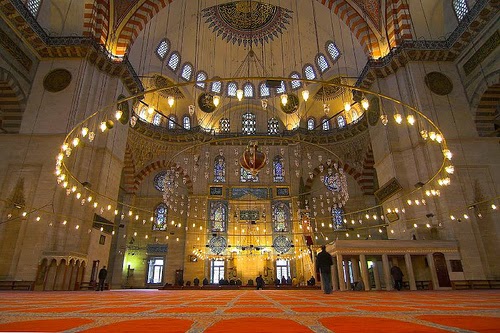Into words.........
Religious Tourism can be
defined as travel with the core motive of experiencing religious forms, or the
products they induce, like art, culture, traditions and architecture.
India has always been hailed as a land of spirituality. Two of the major world
religions, namely Hinduism and Buddhism originated here. India also has several
places related to the Sufi sect of Islam, making it a unique land that is home
to the philosophy of love and harmony.
Religious Tourism in India
Here are some of the Religious
tourist places in India, which are rich in cultural, historical and religious
significance.
1) Haridwar
The city of Haridwar is one of the holiest places of Hinduism. The city’s name reflects the multifarious nature of Hindu philosophy. Hari means Vishnu, the preserver of life where as Hara means Shiva, the destroyer of life. Dwar is tanslated as ‘gatway.’ The city is called as Haridwar (gateway to Hari) or Hardwar (Gateway to Hara). Haridwar is the place where the pilgrimage to mount Kailash traditionally begins; hence it is the gateway to Shiva. Similerly, Haridwar being a point in the Char Dham pilgrimage related to lord Vishnu, it is also a gateway to Vishnu.Haridwar is the point where the Ganges enters the Indo-Genetic planes. Once in every 12 years, the city plays host to the Kumbh Mela. Millions of Hindus flock to the Ganges to take a ritual bath which is believed to cleanse one’s sins. The Kumbh Mela is the largest peaceful gathering in the world. The Har Ki Pauri sacred Ghat on the banks of the river is said to be built by Gupta king Vikramaditya in 1st century BC. The area encompasses Bramha Kund. This is the area where all the priests gather at sunset for a spectacular Aart of the Ganga River. Lamps are left to flow with the water and the evening is illuminated with light as well as spirituality.
2) Varanasi
One
of the oldest continuously inhabited cities in the world, Varanasi is the
holiest city among the seven holy cities of Hinduism. Besides being the
spiritual capital of India, the city is home to the largest residential
university of Asia, the Banaras Hindu University. Varanasi has a rich cultural
history with one of the genres of Indian classical music ‘Banaras Gharana’
being developed here. Apart from the sacred Ghats, the city has many more
fascinating tourist sites like Jantar Mantar and the Ramnagar fort. The fort
was built by the king of Banaras in 18th century. The current resident of the
palace is the current king of Banaras who acts as the patron of Varanasi and
still plays a major part in religious ceremonies.
3) Ajmer
The
city of Ajmer in Rajasthan is home to the Dargah Sharif. This is the shrine
housing the tomb of Sufi Saint Moinuddin Chisthi. Moinuddin Chisthi was a Sufi
saint noted for establishing the Chisthi order of Sufism in Lahore and Ajmer.
This order stresses on reaching close to God through music.The dargah of Moinuddin Chisthi and the mosk built by Mughal emperor Akbar in 1571 is a major
center for Sufi Islam in India. The dargah has been a site of pilgrimage since
as early as 1499. The Dargah evolved to be a fantastic work in indo-islamic architecture as Mughal Emperors Akbar and Shah Jahan richly contributed to its
beautification.
4) Tirumala Venkateswara Temple in
Tirupati
The
earthly abode of Lord Venkateswara (incarnation of Vishnu), Tirumala
Venkateswara Temple is situated on the last hill of the Seshachalam range in
Tirupati, Andhra Pradesh. Like many temples in south India, this holy temple is
known for its exquisite architecture. It is also amongst the most visited Hindu
temples in India as it is said that the temple attracts 60,000 pilgrims each day. One must
attend the Puja that is accompanied by many hymns and praises giving it a touch
of unmatched divinity. The Laddoo Prasadam is yet another attraction of
Tirumala Venkateswara Temple.
5) Bodhgaya: ‘Get Enlightened in the
Land of the Buddha’
Witness the historical place called Bodhgaya in Bihar, where Lord Buddha is believed to have been enlightened. Bodhgaya offers Buddhist pilgrims the ultimate place to pray and meditate. The feelling of being on the land where Budhha once himself walked on is truly commendable. Mahabodhi Temple along with several other temples in Bodhgaya are frequented by many pilgrims that visit here from all over the world.
Just end it with this............
Lots
of tourists from around the world visit India to seek spirituality at India’s
numerous holy places. Even non-religious individuals are visiting these places
as sites of cultural importance or just to get an idea about Hinduism and India
in general. We hope we have pointed out some of the most important religious
destinations of India. Mind you, there are more destinations which we hope to
cover and these are some of the places we think are important and have been. We
cannot guarantee that you will find God but you will certainly discover
yourself in these holy places of India.




















































